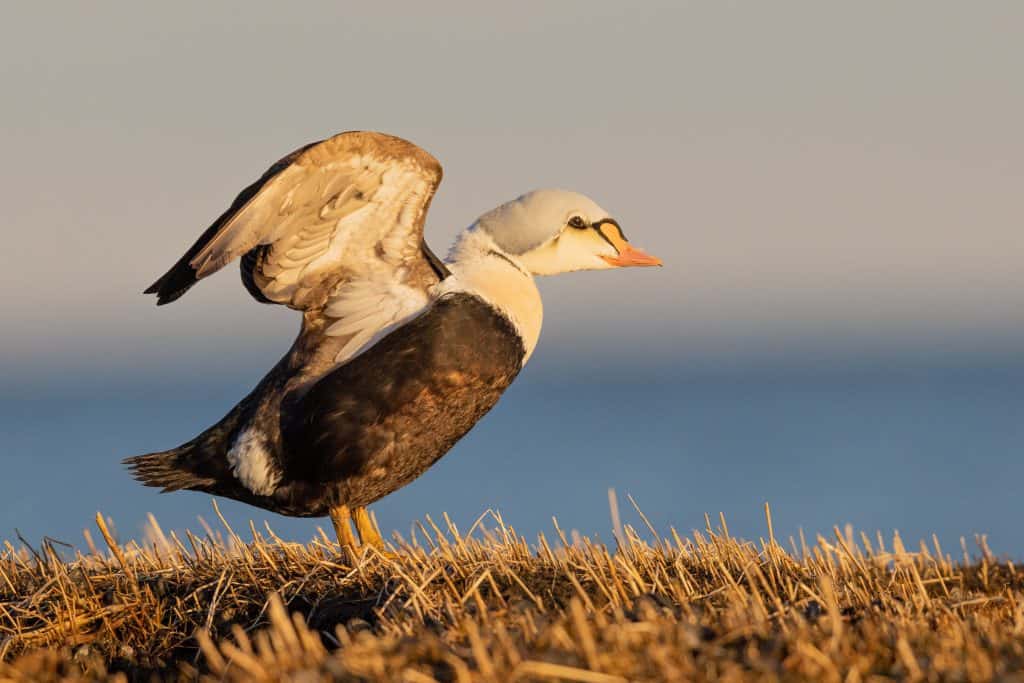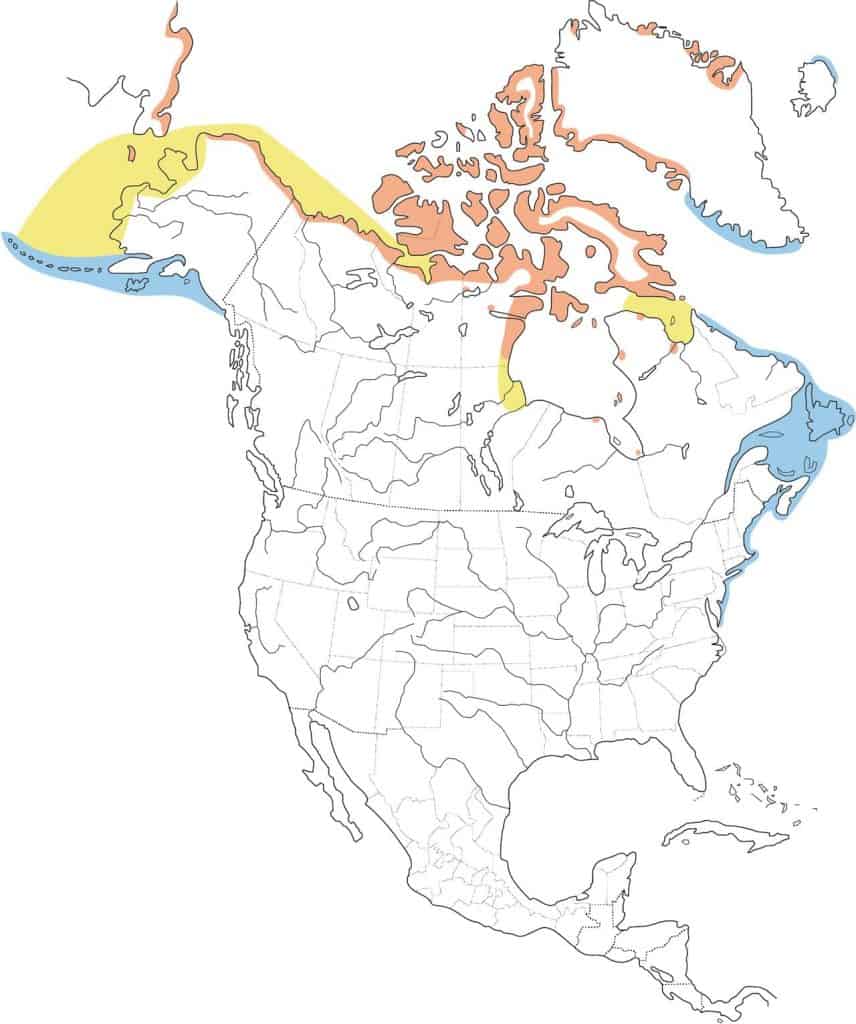
| Appearance | The male king eider has a very unique watercolor appearance. His body is primarily black with a white head and chest. The head is further colored with shades of orange on its front, shades of green on the cheeks, and a bright orange bill. The female is an ordinary, dull brown throughout and a black bill. |
| Diet | Mollusks, shellfish, crustaceans, algae, insects, and plants. |
| Feeder Food | N/A |
| Habitat | Open, treeless, and often rocky areas beside the ocean coast, wetlands, and lakes. |
| Nesting | They are ground nesters. The 10″ wide nest is comprised of ground soil and later adorned with the female’s own down. Clutch: 3-7 eggs Egg color: olive to pale olive Egg size: Unknown Incubation: Incubation is for 22- 24 days. Fledglings leave the nest within days to practice flying which can take up to 50 days. |
Range Map


